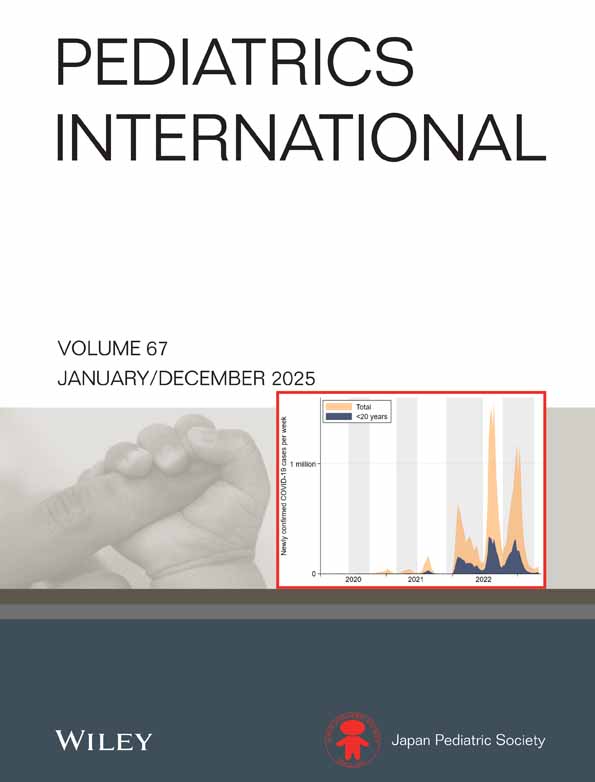Case-control study of giant coronary aneurysms due to Kawasaki disease
Abstract
Background : Epidemiologic features of the formation of giant coronary aneurysm due to Kawasaki disease and its risk factors are not still clear.
Methods : One hundred and five patients with giant coronary aneurysms were selected from the 15th and 16th nationwide surveys of Kawasaki disease in Japan. With all other patients reported from the same hospital as a control group, odds ratios (OR) were calculated for some potential risk factors.
Results : Some factors affecting the formation of giant coronary aneurysms were revealed. Of these factors, the following were considered to be useful for the treatment of patients with Kawasaki disease: male sex (OR compared with females = 1.99), 0 years old (OR compared with 1−2 years = 1.71), visiting the hospital on 1−3 days of illness (OR compared to 4−6 days = 1.72), leukocyte count (OR with 1000 /mm3 increase = 0.56), neutrophil concentration among leukocyte (OR with 10% increase = 1.11), hemoglobin concentration (OR with 1 mg/dL increase = 0.73), alanine aminotransferase level (ALT; OR with 10 IU/dL increase = 1.02) and serum sodium level (OR with 1 mEq/L increase = 0.80).
Conclusions : The observation of 105 cases with giant coronary aneurysms due to Kawasaki disease reported in the nationwide survey provides information about some risk factors and other considerations about the aneurysms.




